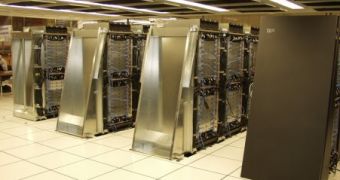SF concepts of robots thinking like humans or brain-like functioning computers have just made their first steps.
A team has managed to simulate half of the complicated way of functioning of a mouse brain cortex on a supercomputer. The "cortical simulator" was achieved with the BlueGene L supercomputer.
Previous smaller simulations enabled the researchers to assess thought patterns how they form in real mouse brains, but the new simulation is faster and more realistic.
However, mimicking brain tissue is extremely complicated due to its complexity, huge numbers of neurons and the astronomic potential interactions they can form.
There are about 8 billion neurons in half of a mouse's brain (in humans, over 50), and each neuron forms up to 8,000 connections with others. Imitating this gives way to "tremendous constraints on computation, communication and memory capacity of any computing platform", noticed the team made of investigators James Frye, Rajagopal Ananthanarayanan, and Dharmendra S Modha from the IBM Almaden Research Lab and the University of Nevada.
The BlueGene L supercomputer has 4,096 processors, each one possessing 256MB of memory.
The virtual mouse brain mimicked 8 billion neurons that made up to 6,300 synapses each.
The complex simulation run just for 10 seconds at a ten times slower velocity than that occurring in real neuronal processes, was equal to one second of functioning of a real mouse's brain. Previous smaller simulations displayed "biologically consistent dynamical properties" taking place as nerve signals running inside the virtual cortex.
Other approaches revealed how neurons formed spontaneously functional groups and virtual synapses fired on the coordinated patterns observed in biological neurons.
The new simulation, even if it displayed similarities with a mouse's brain functioning in what concerns impulse transmission and connections, it did not mimic the cerebral structures from the real mice's brains. Future tests will experiment with higher speeds, in an attempt to get closer to real neurobiological processes, with more detailed results.

 14 DAY TRIAL //
14 DAY TRIAL //